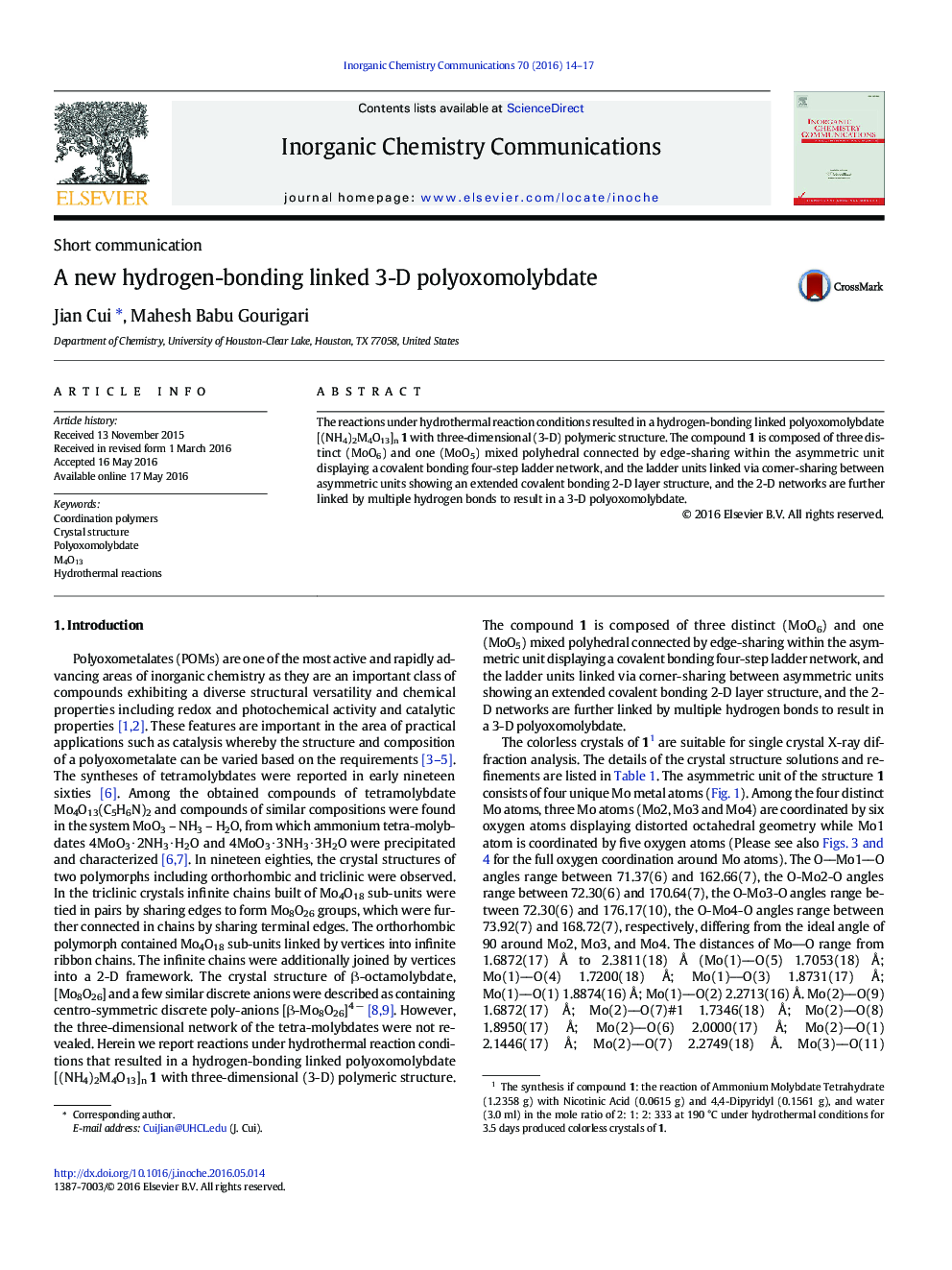| Article ID | Journal | Published Year | Pages | File Type |
|---|---|---|---|---|
| 1305205 | Inorganic Chemistry Communications | 2016 | 4 Pages |
•Mixed polyhedra linked through both edge and corner sharing that are further connected by hydrogen bonds.•The structure displayed a novel 3-D structure with 2-D layered covalent networks.•The 3-D structure is revealed the first time with detailed structural analysis.
The reactions under hydrothermal reaction conditions resulted in a hydrogen-bonding linked polyoxomolybdate [(NH4)2M4O13]n1 with three-dimensional (3-D) polymeric structure. The compound 1 is composed of three distinct (MoO6) and one (MoO5) mixed polyhedral connected by edge-sharing within the asymmetric unit displaying a covalent bonding four-step ladder network, and the ladder units linked via corner-sharing between asymmetric units showing an extended covalent bonding 2-D layer structure, and the 2-D networks are further linked by multiple hydrogen bonds to result in a 3-D polyoxomolybdate.
Graphical abstractThe reactions under hydrothermal reaction conditions resulted in a hydrogen-bonding linked polyoxomolybdate [(NH4)2M4O13]n with three-dimensional (3-D) polymeric structure. The compound is composed of three distinct (MoO6) and one (MoO5) mixed polyhedral connected by edge-sharing within the asymmetric unit displaying a covalent bonding four-step ladder network, and the ladder units linked via corner-sharing between asymmetric units showing an extended covalent bonding 2-D layer structure, and the 2-D networks are further linked by multiple hydrogen bonds. The structure displayed a novel 3-D structure with 2-D layered covalent networks.Figure optionsDownload full-size imageDownload as PowerPoint slide
